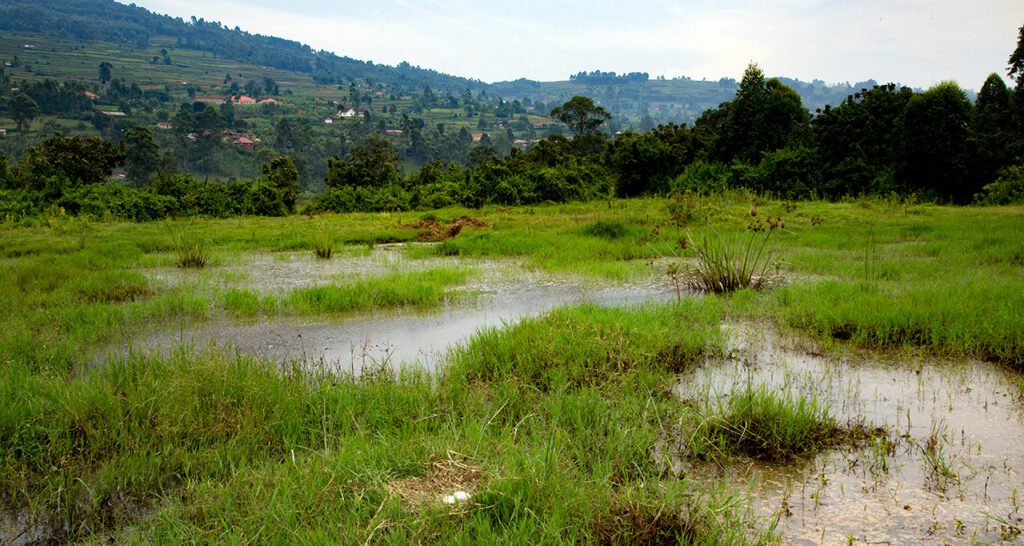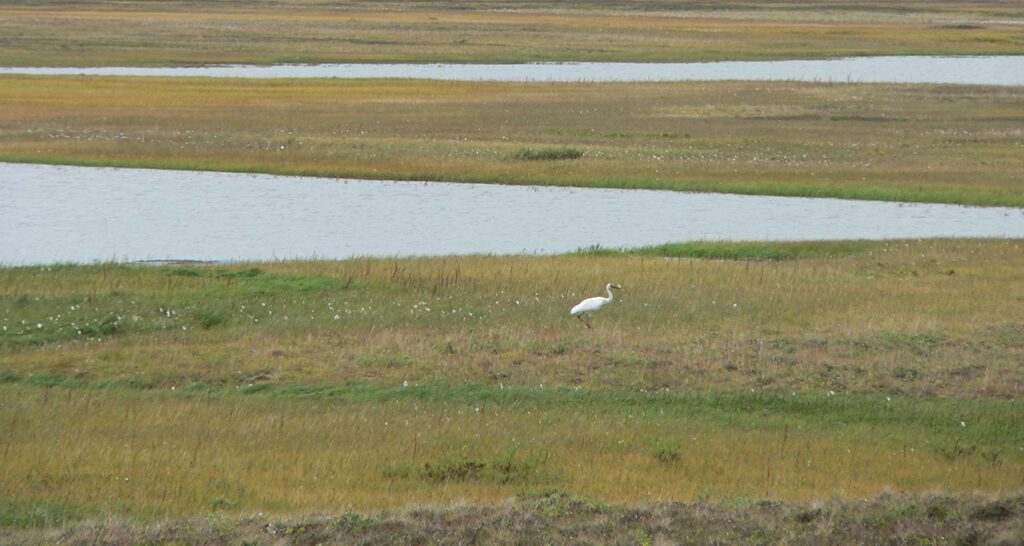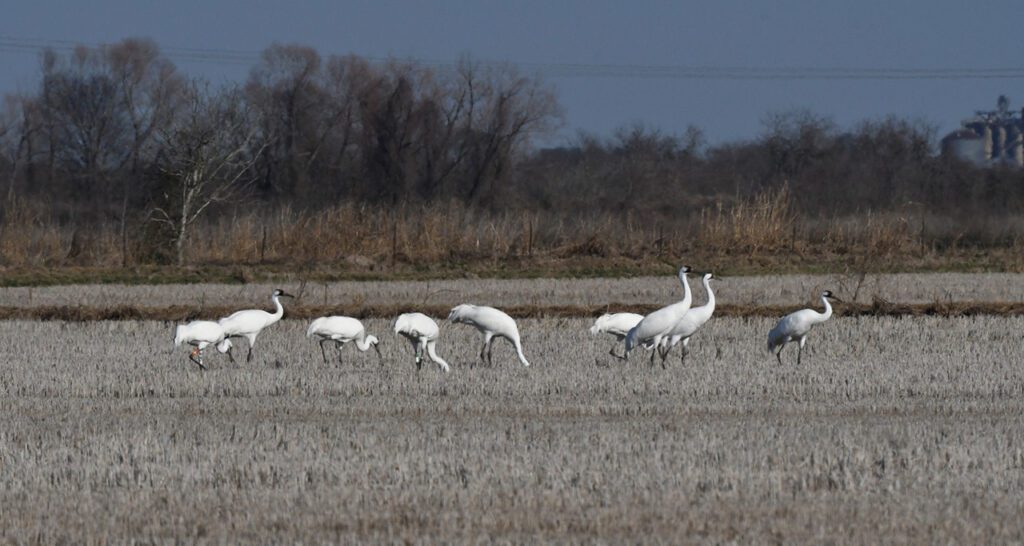Sandhill Crane
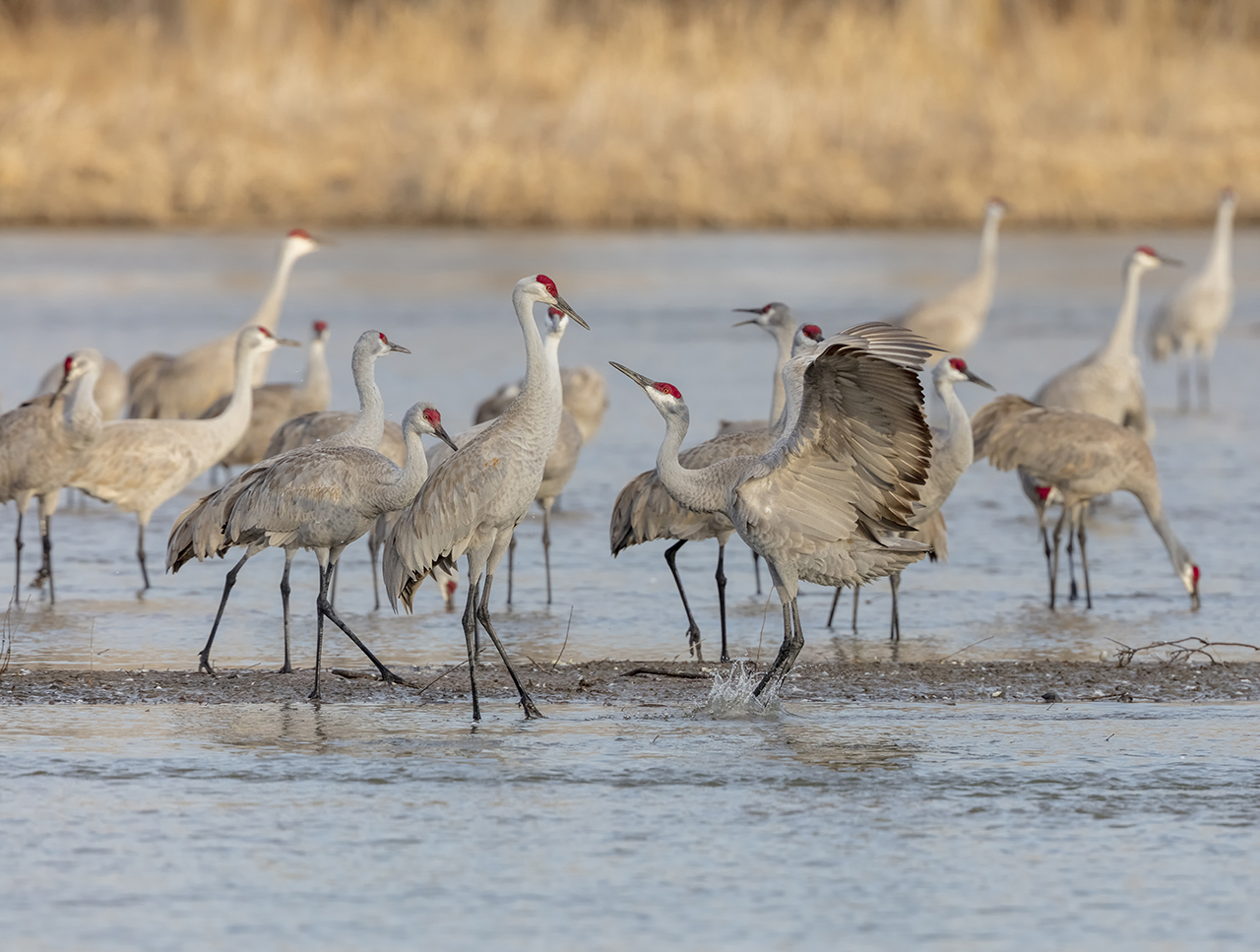
SPECIES: Grus c. canadensis – Lesser; Grus c. tabida – Greater; Grus c. pratensis – Florida; Grus c. pulla – Mississippi; Grus c. nesiotes – Cuban
HEIGHT: ~ 80 – 120 cm, 3 – 5 ft
WEIGHT: ~ 3 – 6.5 kg, 6.5 – 14 lbs
POPULATION: 1,460,000 ±230,000
TREND: Increasing
IDENTIFICATION
Adults – red patch on forehead, legs black, plumage varying shades of grey and brown, body size varies by subspecies; juveniles – cinnamon-brown feathers
Did you see a banded Sandhill Crane? Click here to report your sighting.
Learn what to do if you observe a sick or injured crane here.
RANGE
The two migratory subspecies (Lesser and Greater) are distributed across a broad breeding range in the northern U.S. and Canada as well as eastern Siberia, with wintering grounds in the southern United States and northern Mexico. The three non-migratory subspecies (Mississippi, Cuban and Florida) have restricted ranges in the southern United States and Cuba.
Note that we recognize five Sandhill Crane subspecies per the IOC Master list v 8.2. The Canadian subspecies rowani was found in 2001 to have insignificant genetic differentiation and is included in the Greater subspecies tabida (Rhymer et al, 2001).
View our Sandhill Crane Finder to explore Sandhill Crane distribution and locate cranes near you! AND take a tour through our interactive story map and learn about a few of our favorite locations for viewing cranes in the United States.
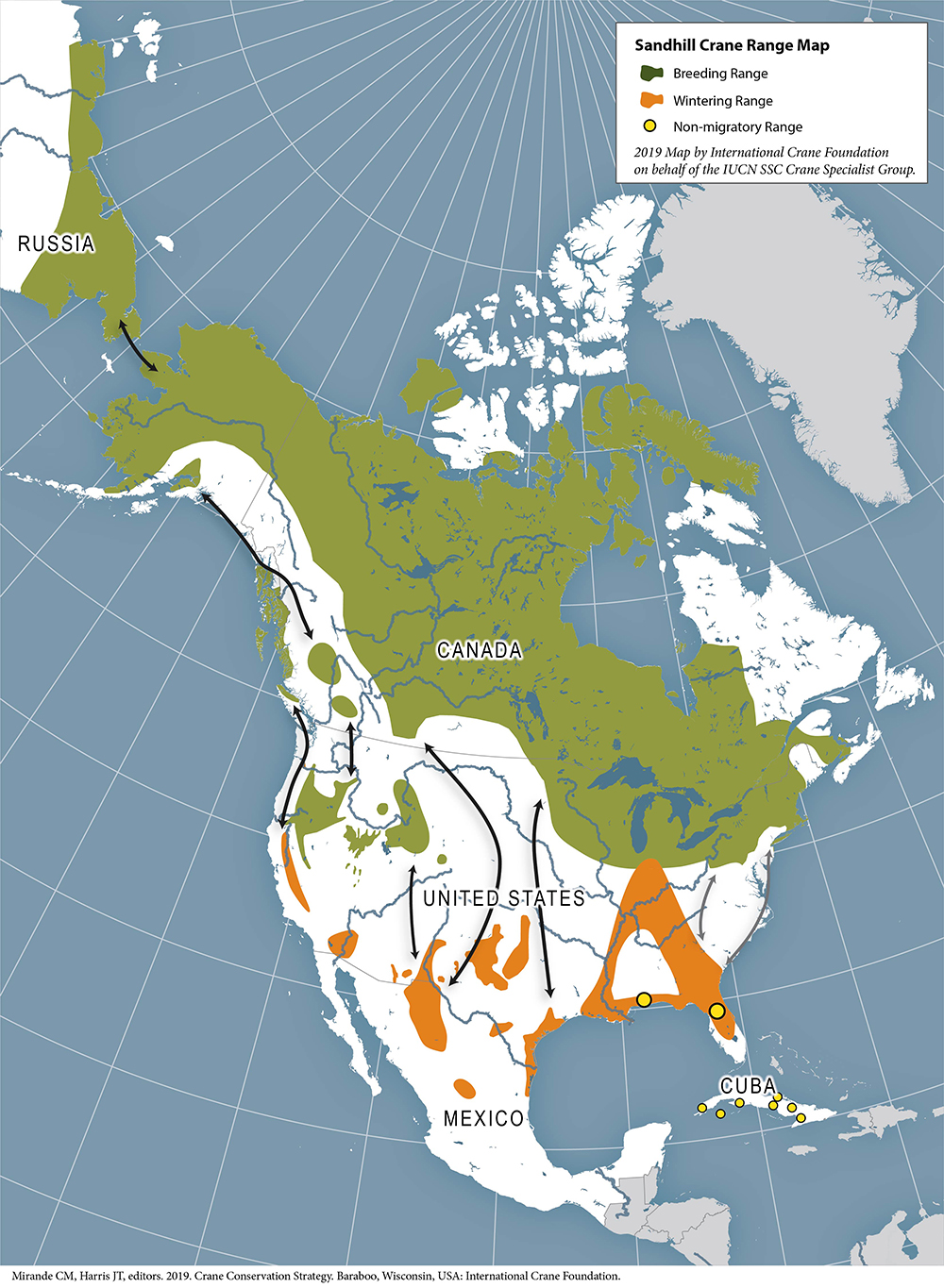
DIET
Plant tubers, grains, small mammals, amphibians, reptiles, insects and grain such as corn.
CALL
Loud, rattling kar-r-r-o-o-o. Listen to Sandhill Crane calls:
Contact Call | A soft, purring call expressing reassurance and location.
Unison Calls | A duet performed by a pair, to strengthen their bond and protect their territory.
Guard Call | A sharp, single call expressing alarm.
THREATS
Conversion of grasslands to agriculture, afforestation and other development, habitat loss and conflicts with agriculture.
OUR PLAN
Conduct applied research on issues important to the future of Sandhill Cranes, and develop creative solutions to emerging conservation challenges. We are:
- Promoting the use of deterrents for those farmers who have experienced crop damage from cranes.
- Assessing the impacts of hunting on Sandhill Cranes and the illegal shooting of Whooping Cranes and sharing that information with stakeholders and decision-makers.
- Monitoring impacts of power line and wind turbine development and collaborating with the industry to develop and implement strategies that reduce risks to cranes.
- Investigating how habitat changes affect crane reproductive success potential.
Learn more about Sandhill Cranes:
